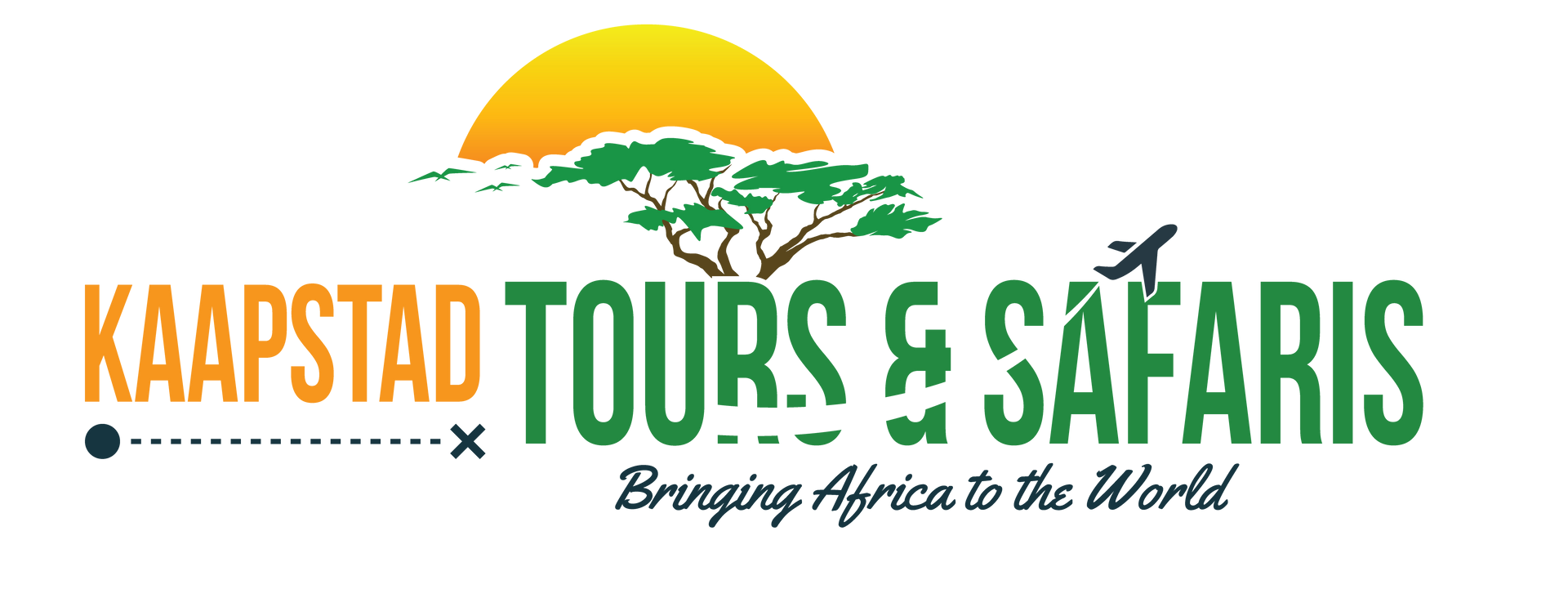KENYA
WHERE SAFARI BEGAN
Kenya has a considerable land area devoted to wildlife habitats and tourism is the second-largest source of foreign exchange revenue following agriculture. The main tourist attractions are through the 60 national parks and game reserves.
One of these is the famous Masaai Mara, world famous for the great wildebeest migration which is considered to be a wonder of the natural world.
AMBOSELI NATIONAL PARK
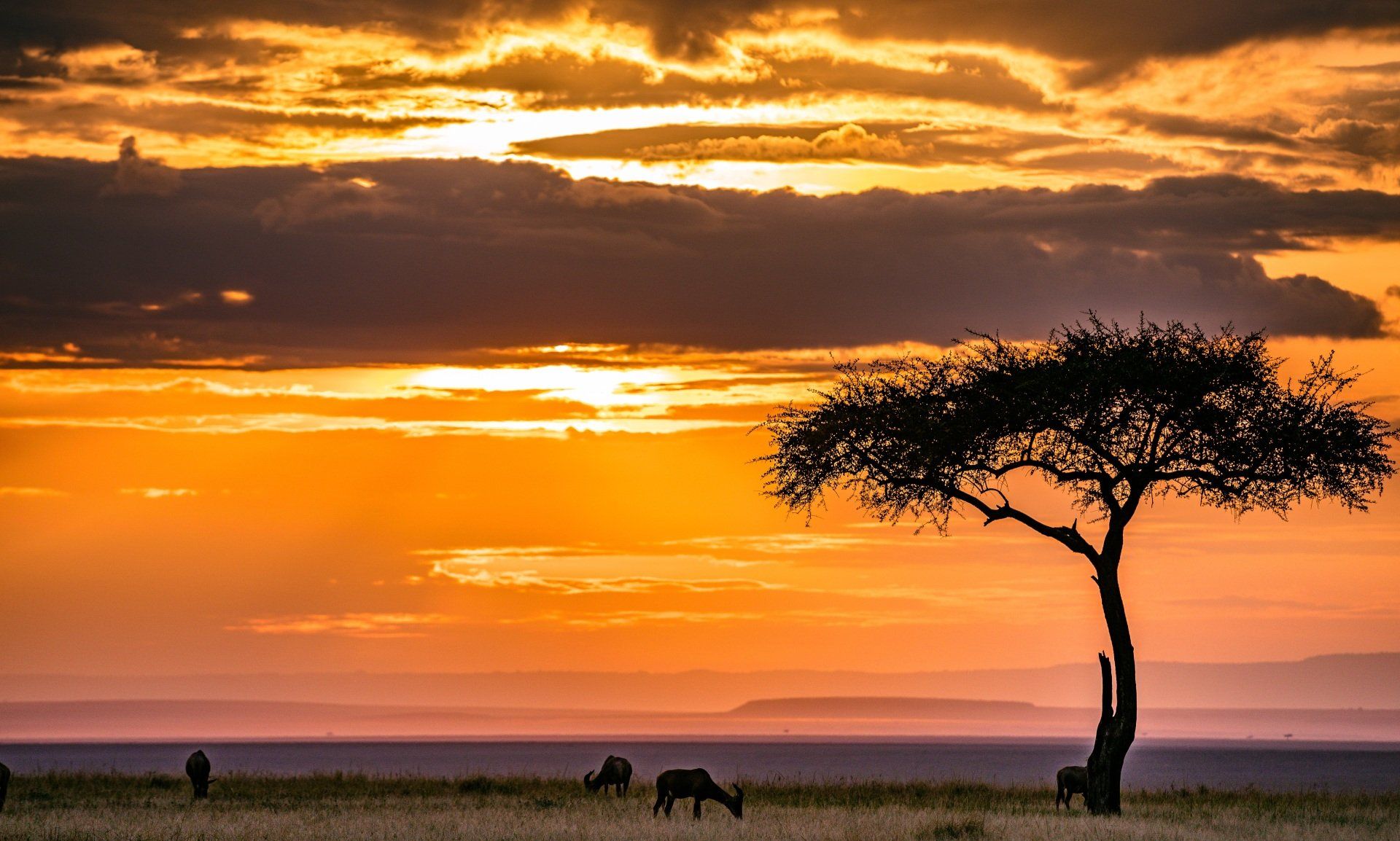
The park is 39,206 ha (392.06 km²) in size at the core of an 8,000 km² (3,100 sq mi) ecosystem that spreads across the Kenyan and Tanzanian border. The local people are mainly Maasai, but people from other parts of the country have settled there attracted by the successful tourist-driven economy and intensive agriculture along the system of swamps that makes this low-rainfall area, average 350 mm (14 in), one of the best wildlife-viewing experiences in the world with 400 species of birds including water birds like pelicans, kingfishers, crakes, hamerkop and 47 raptor species.
The park protects two of the five main swamps, and includes a dried-up Pleistocene lake and semiarid vegetation.

The park is 39,206 ha (392.06 km2) in size at the core of an 8,000 km2 (3,100 sq mi) ecosystem that spreads across the Kenyan and Tanzanian border. The local people are mainly Maasai, but people from other parts of the country have settled there attracted by the successful tourist-driven economy and intensive agriculture along the system of swamps that makes this low-rainfall area, average 350 mm (14 in), one of the best wildlife-viewing experiences in the world with 400 species of birds including water birds like pelicans, kingfishers, crakes, hamerkop and 47 raptor species.
The park protects two of the five main swamps, and includes a dried-up Pleistocene lake and semiarid vegetation.
MAASAI MARA
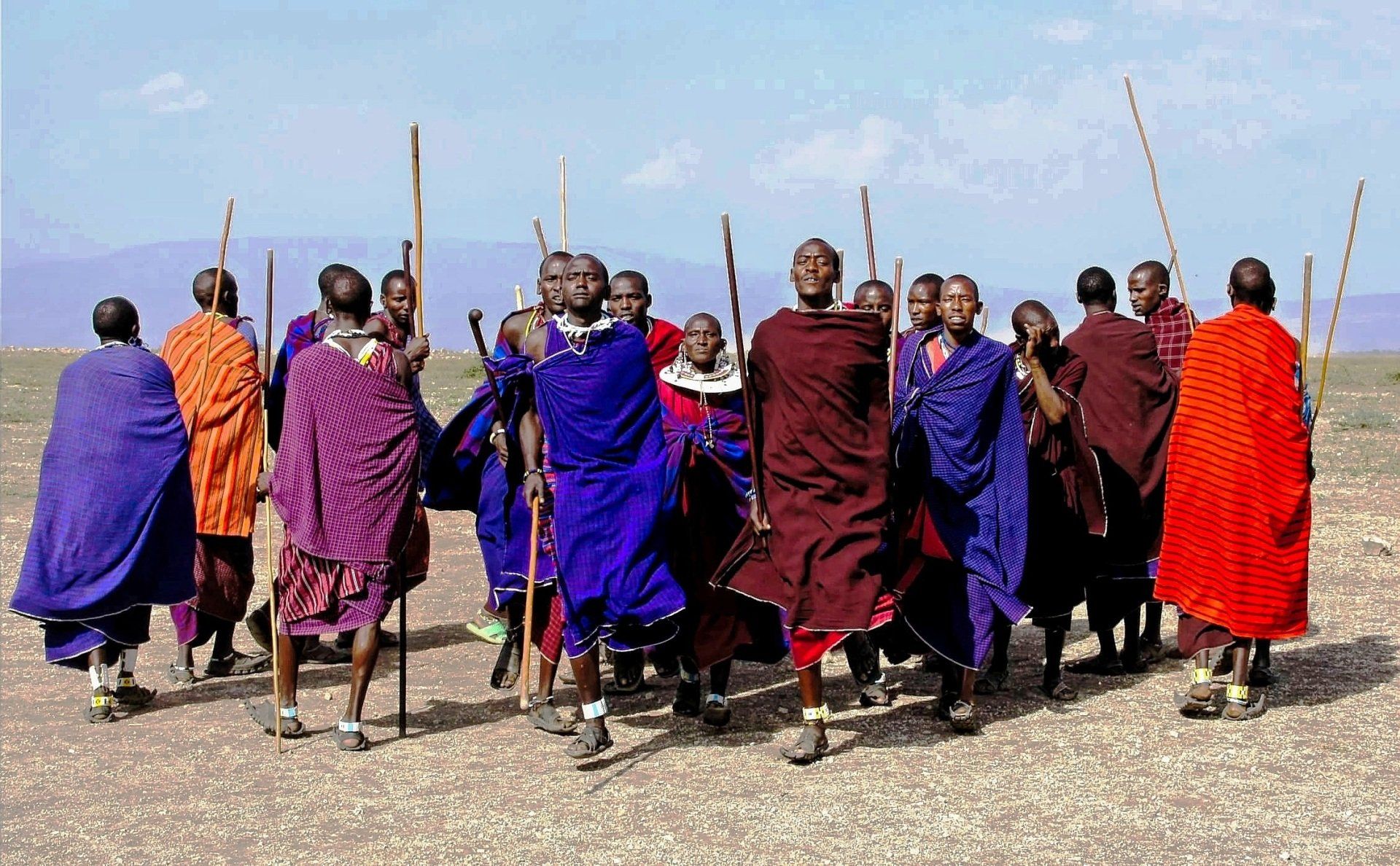
Also known as The Mara, is a large national game reserve, contiguous with the Serengeti National Park in Tanzania. It is named in honor of the Maasai people, the ancestral inhabitants of the area, who migrated to the area from the Nile Basin. Their description of the area when looked at from afar: "Mara" means "spotted" in the local language, due to the many short bushy trees which dot the landscape.
Maasai Mara is one of the most famous and important wildlife conservation and wilderness areas in Africa, world-renowned for its exceptional populations of lion, leopard, cheetah and elephant.
The Greater Mara ecosystem encompasses areas known as the Maasai Mara National Reserve, the Mara Triangle, and several Maasai Conservancies, including Koiyaki, Lemek, Ol Chorro Oirowua, Mara North, Olkinyei, Siana, Maji Moto, Naikara, Ol Derkesi, Kerinkani, Oloirien, and Kimintet.

Also known as The Mara, is a large national game reserve, contiguous with the Serengeti National Park in Tanzania. It is named in honor of the Maasai people, the ancestral inhabitants of the area, who migrated to the area from the Nile Basin. Their description of the area when looked at from afar: "Mara" means "spotted" in the local language, due to the many short bushy trees which dot the landscape.
Maasai Mara is one of the most famous and important wildlife conservation and wilderness areas in Africa, world-renowned for its exceptional populations of lion, leopard, cheetah and elephant.
The Greater Mara ecosystem encompasses areas known as the Maasai Mara National Reserve, the Mara Triangle, and several Maasai Conservancies, including Koiyaki, Lemek, Ol Chorro Oirowua, Mara North, Olkinyei, Siana, Maji Moto, Naikara, Ol Derkesi, Kerinkani, Oloirien, and Kimintet.
TSAVO EAST NATIONAL PARK
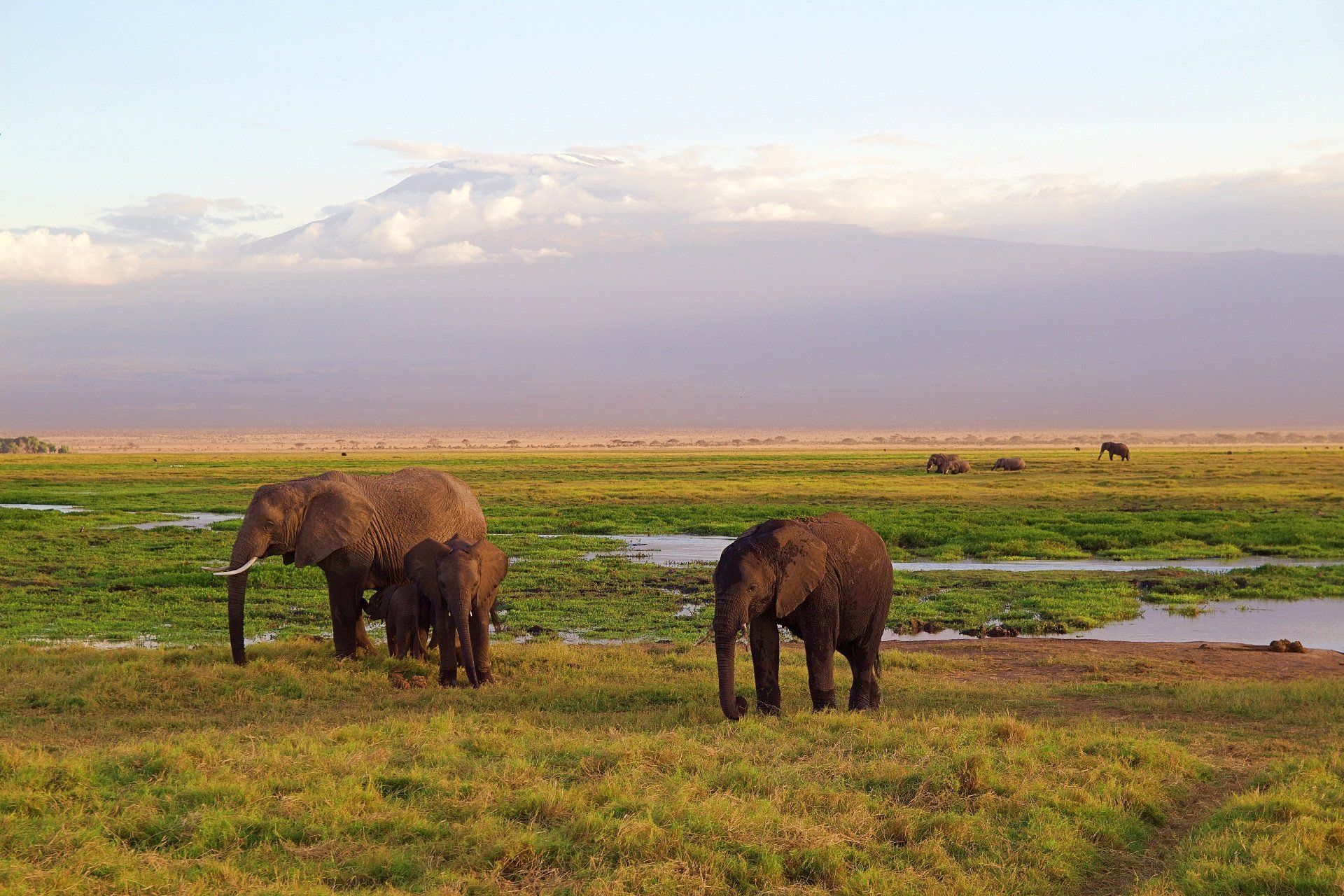
The ideal period to visit the Moremi Reservere are the dry winter months between July and September. It is during this season that the pans are drying out and because of that game is gathering around the few pools left. Game viewing is done by traditional 4x4 safari vehicle, motorboat or canoe.
The reserve had in 1976 a surface of 3800 km², in de 1990's another 1050 km² was added to the reserve, wherefrom 20% Okavango Delta. The reserve can be reached from Maun and further in the northeast into the direction of Shorobe along a tarred road which ends up into a gravel road. The road becomes a deep 4x4 sand track past the Buffalo Fence and goes between mopane and acacia woodland. On less than 100 km from Maun, visitors reach finally the Moremi Game Reserve.

The ideal period to visit the Moremi Reservere are the dry winter months between July and September. It is during this season that the pans are drying out and because of that game is gathering around the few pools left. Game viewing is done by traditional 4x4 safari vehicle, motorboat or canoe.
The reserve had in 1976 a surface of 3800 km?, in de 1990's another 1050 km? was added to the reserve, wherefrom 20% Okavango Delta. The reserve can be reached from Maun and further in the northeast into the direction of Shorobe along a tarred road which ends up into a gravel road. The road becomes a deep 4x4 sand track past the Buffalo Fence and goes between mopane and acacia woodland. On less than 100 km from Maun, visitors reach finally the Moremi Game Reserve.
TSAVO WEST NATIONAL PARK
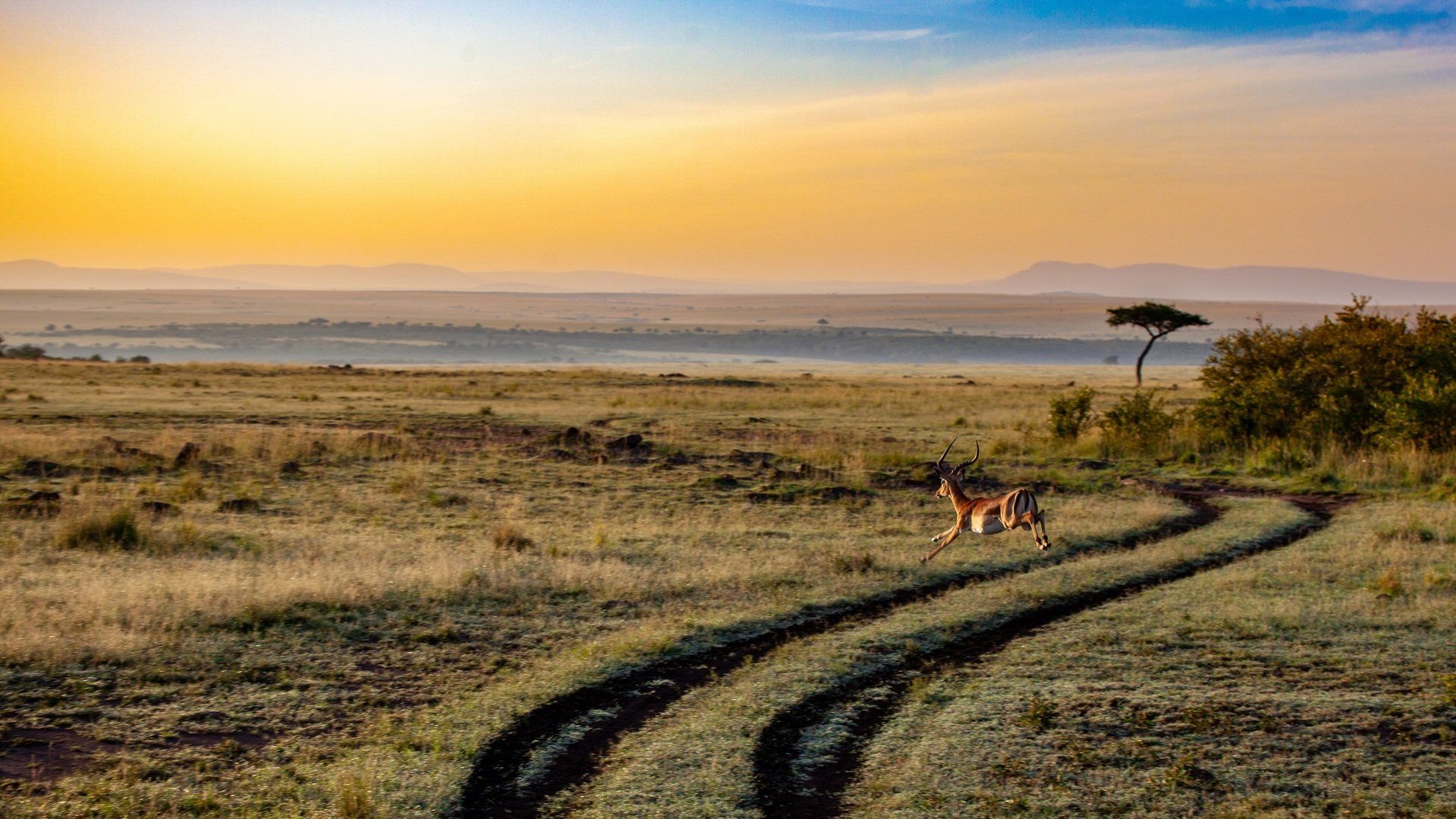
Tsavo West National Park covers an area of 9,065 km². The A109 road Nairobi-Mombasa and a railway divides it from the adjoining Tsavo East National Park. Together with adjoining ranches and protected areas, they comprise the Tsavo Conservation Area. Tsavo West is a more popular destination on account of its magnificent scenery, Mzima Springs, rich and varied wildlife, good road system, rhino reserve, rock climbing potential and guided walks along the Tsavo River. The park is operated by the Kenya Wildlife Service.

Tsavo West National Park covers an area of 9,065 km². The A109 road Nairobi-Mombasa and a railway divides it from the adjoining Tsavo East National Park. Together with adjoining ranches and protected areas, they comprise the Tsavo Conservation Area. Tsavo West is a more popular destination on account of its magnificent scenery, Mzima Springs, rich and varied wildlife, good road system, rhino reserve, rock climbing potential and guided walks along the Tsavo River. The park is operated by the Kenya Wildlife Service.
GET IN TOUCH
Email:
Phone: +27 82 297 5218
Address:
23 Gemsbok Street
Krugersdorp
South Africa,
1731
Contact Us
We will get back to you as soon as possible.
Please try again later.
